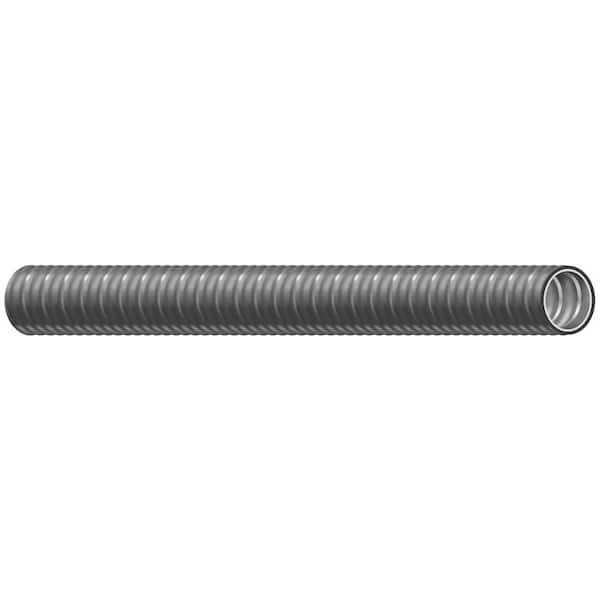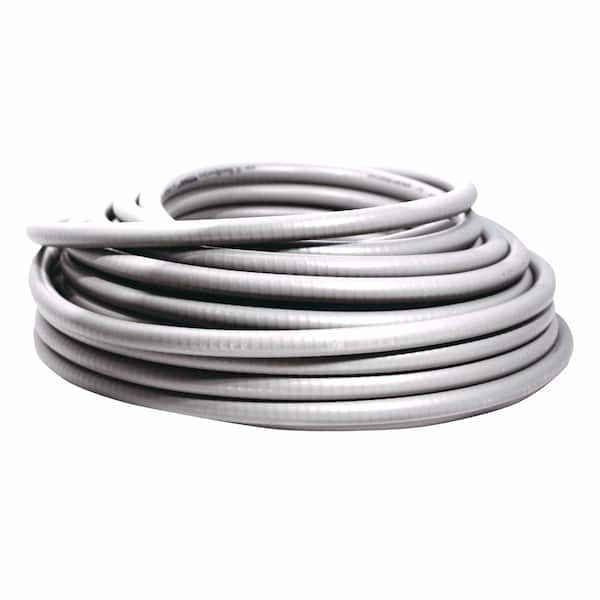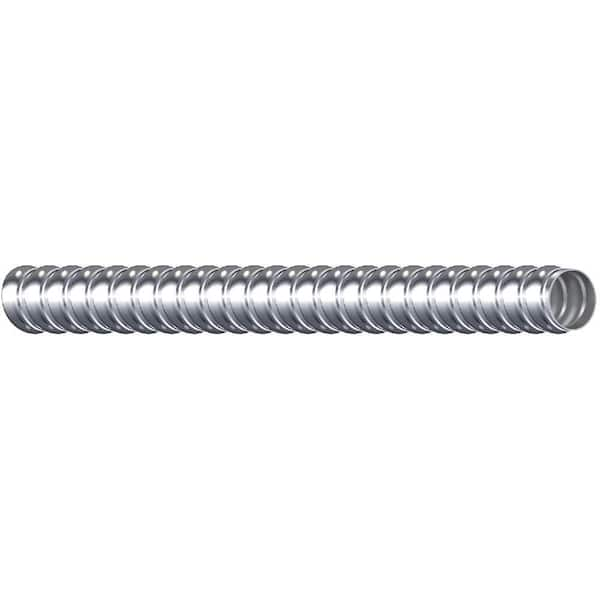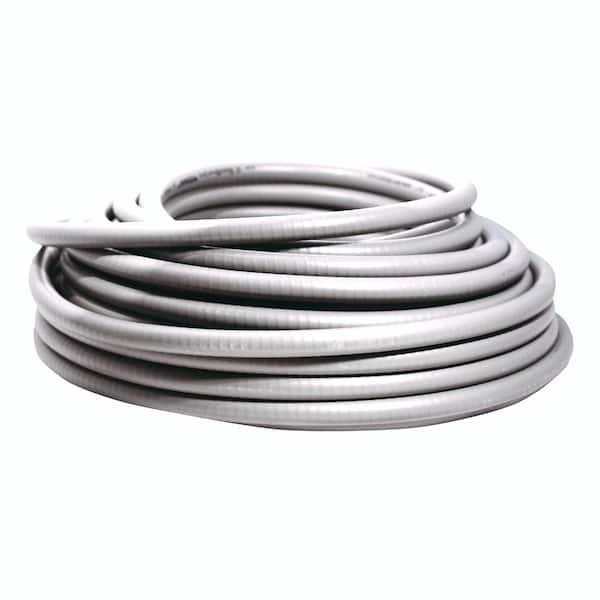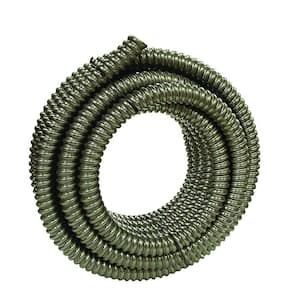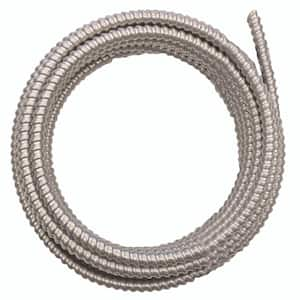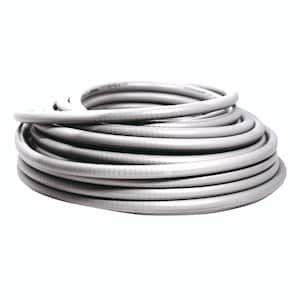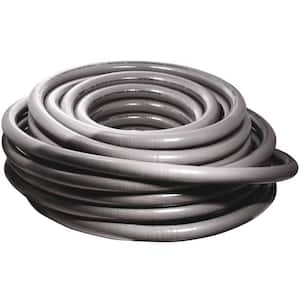
- Use in motor circuits for conductors
- Flexible, metallic PVC construction
- Protects against liquids, vapors, solids and weather
Free & Easy Returns In Store or Online
Return this item within 90 days of purchase.
Get an immediate answer with AI
AI-generated from the text of manufacturer documentation. To verify or get additional information, please contact The Home Depot customer service.
Product Details
About This Product
Use the Southwire Ultratite 3/4 in. x 25 ft. Liquid-Tight Flexible Metallic Conduit in the installation and protection of electrical conductors in circuits of 600 volts nominal or less. Accommodates exposed or concealed installations in agricultural buildings. Designed for direct burial and encased-in-concrete installations.
Highlights
- Brand received (Cerrowire or Southwire) varies by zip code
- Suitable for the installation and protection of electrical conductors in circuits of 600 volts nominal or less
- For use in industrial and commercial applications for conveyors, blowers, cranes, air conditioners, machine tooling and lubrication equipment
- Also for use in motor circuits for conductors of motor feeders, branch and control circuits
- For flexible connections to swimming pool, spa or hot tub motors
- Use with electric signs, outline lighting supply and secondary-circuit conductors
- Flexible, metallic PVC construction
- Protects against liquids, vapors, solids and weather
- Ideal for applications requiring movement, cross-over connections or tight bends
- UL and CSA safety listings
- Click here to shop for more Southwire products
- Note: Product may vary by store.
- Return Policy
Product Information
Specifications
Dimensions
Product Length (ft.) | 25 ft | Trade Size (in.) | 3/4 |
|---|
Details
Conduit Type | LiquidTight | Indoor/Outdoor | Outdoor |
|---|---|---|---|
Material | Steel | Metallic/Non-Metallic | Metallic |
Pack Size | 1 | Product Weight (lb.) | 3.13 lb |
Returnable | 90-Day |
Warranty / Certifications
Certifications and Listings | CSA Listed, UL Listed | Manufacturer Warranty | N/A |
|---|
Questions & Answers
Outside diameter of 3/4" liquid tight conduit
Csn i use this instead of emt to run conduit to a light outside the side of my home? Since its weather resistant, sun resistant, and has steel flex.
We are happy to help! Please consult with our team at cabletechsupport@southwire.com for further assistance.
I am relocating my generator manual transfer switch. Can I run 15' of flexible metallic steel conduit from switch in basement dry area, out of sill 10' under a deck to the power inlet box?
We are happy to help! Please consult with our team at cabletechsupport@southwire.com for further assistance.
Running 16 ft of 6/3 outside barn before burying in ground. Got pvc for urd
Please consult a local electrician. The above advice is based upon the current edition of the National Electric Code (NEC). Free access to the latest version of the NEC is available online at www.nfpa.org/freeaccess. The NEC and local building codes regulate the types of wire and cable that can be used in specific electrical applications, as well as the manner of installation. Check your local building codes before you start any wiring and cable electrical project and be sure to obtain required permits. When your work is complete, always have it inspected for compliance with local codes to ensure that it has been safely installed.
Can this conduit be used for residential electrical through metal studs with Stranded CU THHN Wire even though it is for a commercial purpose
Please contact cabletechsupport@southwire.com for further assistance.
Can this buried in a 6"-12" trench or does this have to be buried 18"?
This answer will change under different circumstances IE: location ( under a driveway, under a building, etc). I would either consult your local electrician or look at the NEC table 300.5 for reference. The above advice is based upon the current edition of the National Electric Code (NEC). Free access to the latest version of the NEC is available online at www.nfpa.org/freeaccess. The NEC and local building codes regulate the types of wire and cable that can be used in specific electrical applications, as well as the manner of installation. Check your local building codes before you start any wiring and cable electrical project and be sure to obtain required permits. When your work is complete, always have it inspected for compliance with local codes to ensure that it has been safely installed.
18" is the standard depth for conduit, however you should not use metallic liquid tight flex for bury as there is always condensation and the metallic portion will rust. Use Non-metallic and bury 24" as a shovel will cut it. 12"-18" is okay if it is under concrete or asphalt.
I am installing a exterior receptacle on my shop.
What is the bend radius of the conduit
The approximate bend radius is 5 inches for 3/4 inch Liquid-Tight Flexible Metallic Conduit.
Viewing 1-8 of 9
Customer Reviews
4.3 out of 5
